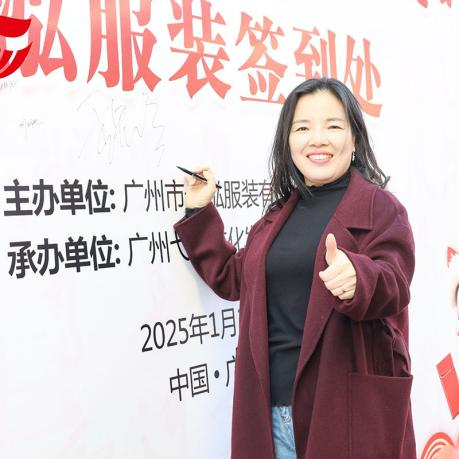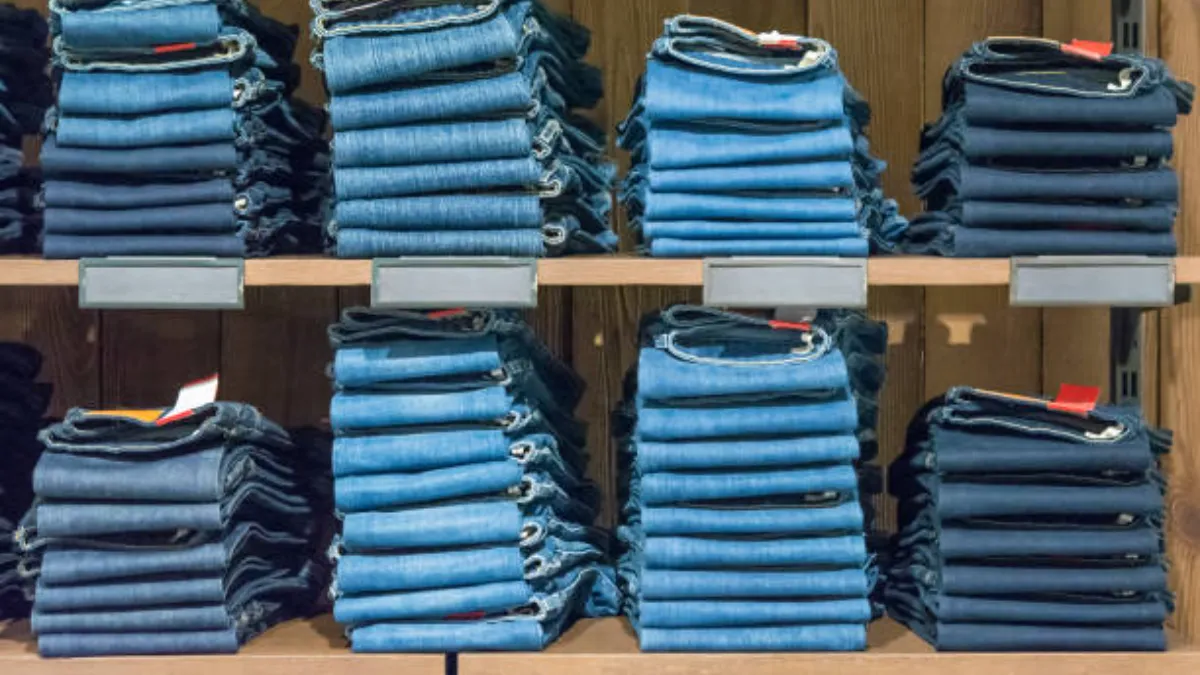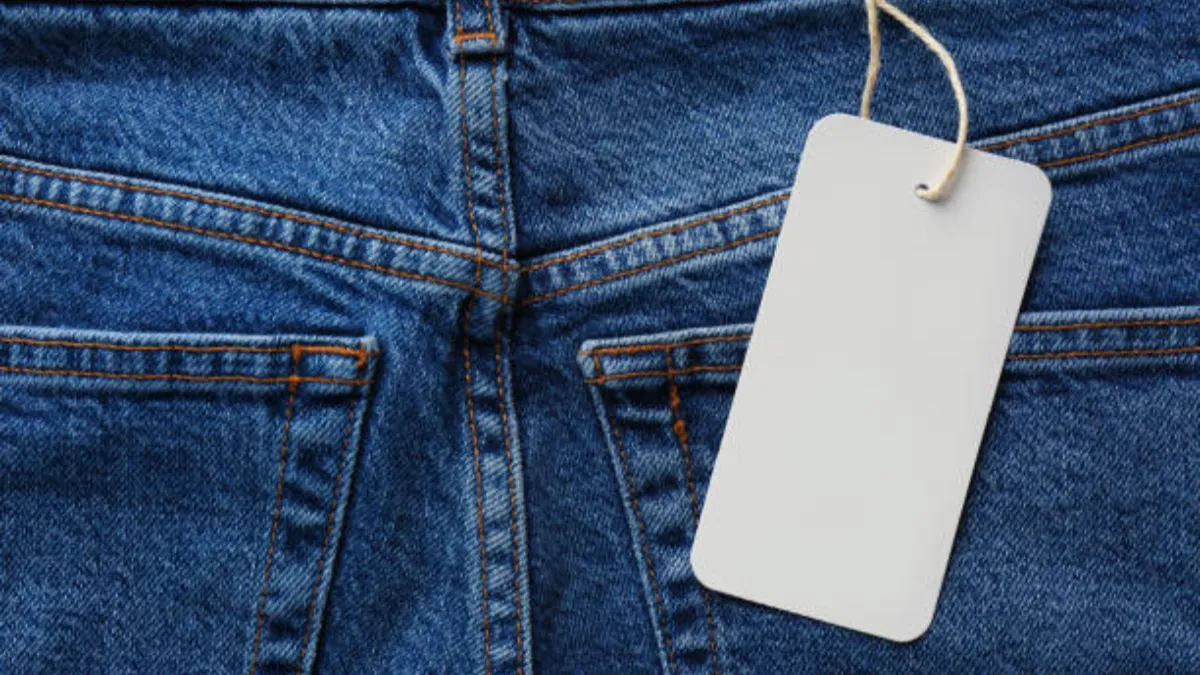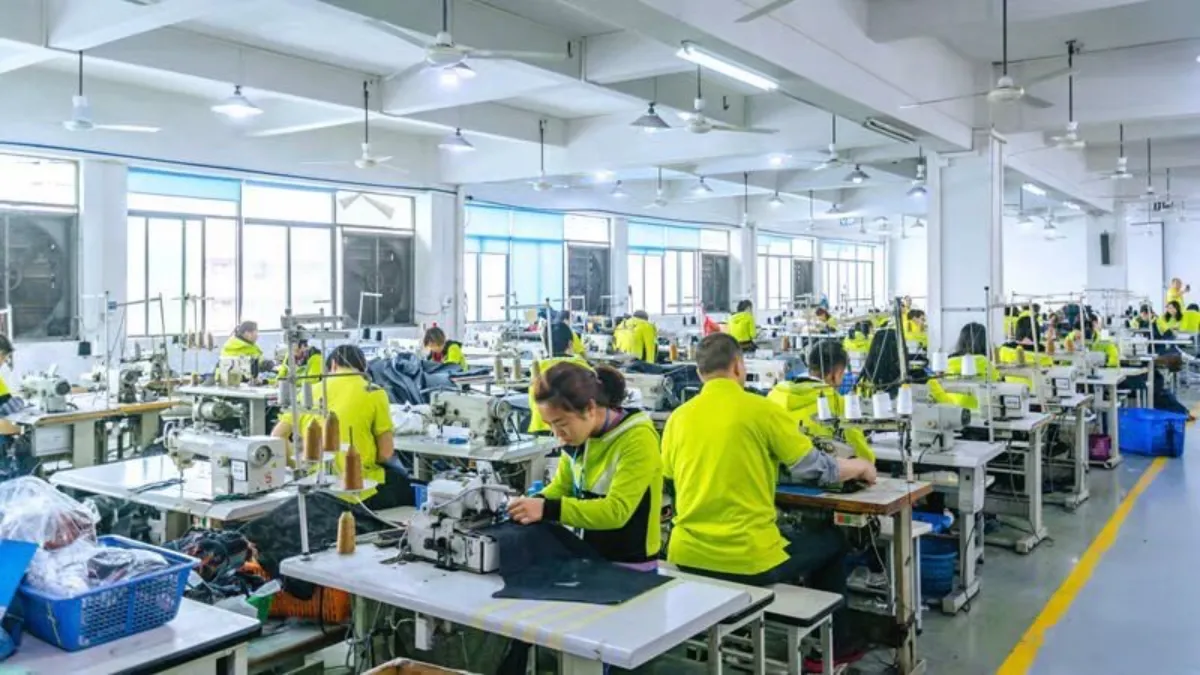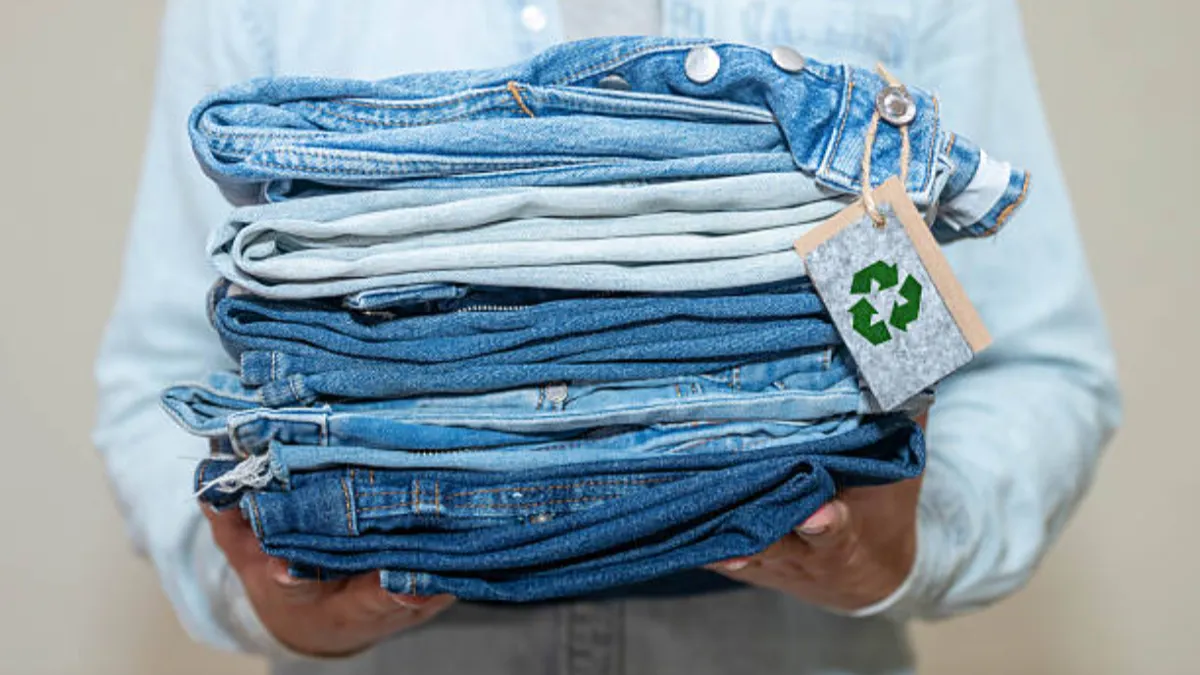There are several main types of denim fabrics, including raw, sanforized, selvedge, extensible, and organic denim. Each type differs in composition, weaving method, and finishing process, which determine its comfort, durabilité, and aesthetic appeal.
As global demand shifts toward performance and sustainability, understanding these distinctions helps brands balance creative vision with production realities. In the following sections, we’ll explore how each denim type serves a specific purpose in design and manufacturing, guiding you toward the best fit for your next collection.
Quick Comparison Table of Denim Fabric Types
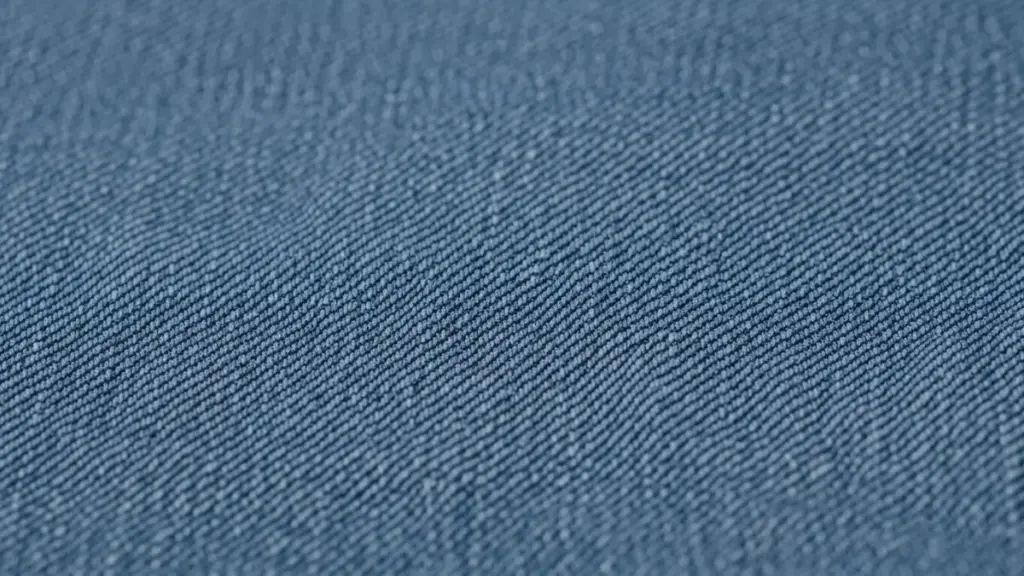
The table below summarizes key technical attributes and commercial considerations, enabling procurement teams and product developers to match fabric capabilities with market objectives quickly and effectively.
| Denim Type | Key Attributes & Sourcing Considerations |
|---|---|
| 100% Jean en coton | Pure cotton, medium to heavy weight. High durability and breathability, ideal for workwear and classic jeans. Consistent supply and pricing; limited stretch requires pattern modification for comfort-oriented designs. |
| Étirement du denim (Elastane/Spandex) | Cotton blended with 1–5% elastane/spandex, light to mid-weight twill. Flexible with strong shape retention, suited to slim-fit styles. Slightly higher material cost and supply risk for premium stretch yarns. |
| Denim lisière | Shuttle-loom woven, heavier weight, finished edges. Targets premium niche markets; durable with vintage appeal. Higher unit cost and longer lead times—best for limited editions or flagship products. |
| Denim brut | Non lavé, untreated, heavy weight, stiff hand. Develops unique wear patterns, valued by specialty brands. Needs customer education; break-in period limits mass-market adoption. |
| Vintage Wash Denim | Treated for worn-in look and softness, available in various weights. Broad fashion use with immediate comfort. Additional wash cost and strict QC to control shade variation. |
| Poly Denim (Cotton/Polyester Blend) | Improved wrinkle resistance and reduced shrinkage, moderate weight. Fits uniform and budget casualwear needs. Lower breathability; price shifts with polyester market. |
| Denim biologique | Certified organic cotton, medium to heavy weight. Supports sustainability positioning. Commands premium pricing and faces limited certified supply. |
| Bull Denim | Heavy cotton with canvas-like weave, highly durable. Common in upholstery and workwear. Stiffness restricts style versatility; heavier freight costs. |
| Specialty Finishes (Acid-Wash, Crushed) | Distinct surface treatments, variable weights. Enhances design differentiation for limited collections. Adds cost and complexity; quality depends on supplier QC strength. |
The Main Types of Denim Fabric Explained
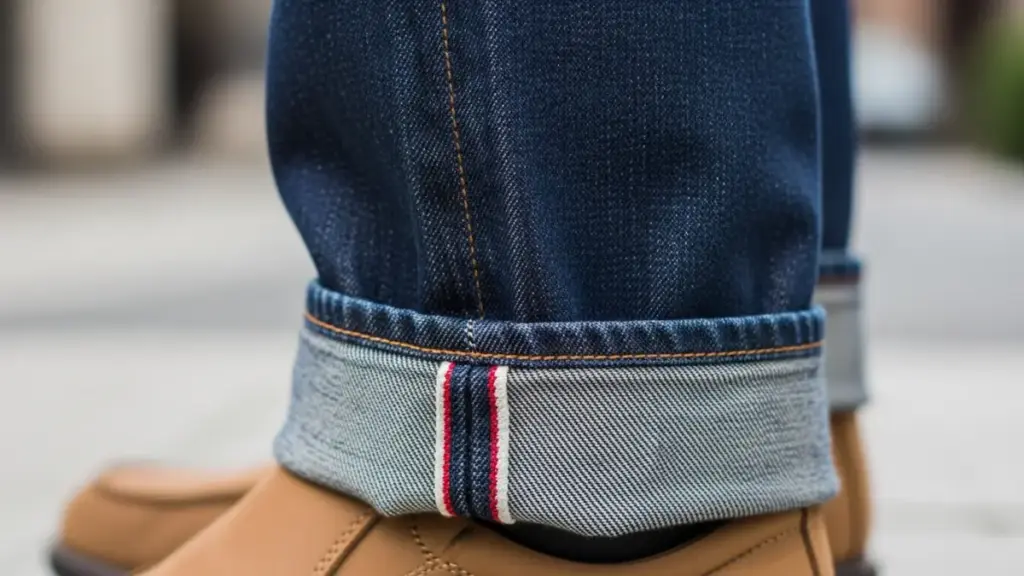
Selecting the right tissu en jean requires understanding how each construction performs during manufacturing and in-market use. Different weaves affect shrinkage control, durabilité, confort, and overall brand perception. Drawing on proven weaving and finishing expertise enables precise alignment between fabric choice, target market requirements, et capacités de production.
Denim brut
Raw denim is untreated fabric woven, généralement 100% cotton with a weight of 12–16 oz. It retains stiffness, deep indigo color, et retrait naturel. During production, precise shrinkage tests and pattern allowances are essential to control size variation. This fabric is favored by premium and heritage brands whose customers appreciate the break-in process and the evolution of personalized fades over time.
Sanforized Denim
Sanforized denim goes through a controlled pre-shrinking process that keeps shrinkage to roughly 3% or less. This treatment ensures consistent sizing, smoother cutting, and reduced shrinkage after washing. It is the most common type used in 10–14 oz ranges, balancing comfort and stability. Manufacturers prefer sanforized denim for large-scale production where reliable fit and predictable fabric behavior are crucial.
Denim lisière
Selvedge denim is woven on shuttle looms, producing self-finished edges and a dense structure that prevents fraying. Usually 13–16 oz, it uses high-grade cotton yarns and slower weaving speeds, which increase cost but enhance durability and authenticity. It suits premium lines emphasizing craftsmanship and storytelling, where texture, aging, and provenance strengthen brand appeal.
Étirement du denim
Stretch denim combines cotton with 1–3% elastane or similar fibers to provide flexibility and shape recovery. Typically 8–12 oz, it allows close-fitting designs while maintaining comfort. Accurate recovery and spirality testing are vital before mass production. It’s a key choice for women’s and youth markets seeking movement, softness, and a flattering fit.
Bull Denim
Bull denim is a heavyweight, tightly woven twill, generally 12–21 oz and 100% coton. It offers high abrasion and tear resistance, making it ideal for workwear, uniforms, and industrial garments. The surface can be finished or over-dyed for added comfort or color variety. Brands choose it for strength, long wear life, and authentic utility aesthetics.
Acid Wash Denim
Acid wash denim achieves a high-contrast, worn appearance through controlled chemical or pumice treatments. The technique lightens indigo unevenly for a vintage or grunge effect. Production must monitor chemical exposure and batch consistency to prevent fiber damage or color irregularities. It’s popular in retro, rue, and statement collections.
Crushed Denim
Crushed denim has a permanently wrinkled texture created by mechanical compression after weaving. The process gives depth and surface interest while maintaining the base structure. It’s often used in fashion jackets, jupes, or statement pieces. Manufacturers should test fabric strength after finishing to ensure the texture doesn’t weaken the yarns.
Poly Denim
Poly denim blends cotton with polyester or other synthetics to reduce cost, improve wrinkle resistance, and enhance softness. It’s lighter, faster-drying, and easier to care for than pure cotton denim. Suitable for value and easy-care markets, it performs well in casualwear where durability and low maintenance matter.
Denim coloré
Colored denim extends beyond indigo to include blacks, greys, pastels, and fashion tones achieved through reactive or sulfur dyeing. Consistent shade control and colorfastness tests are essential. Brands use colored denim to diversify seasonal lines while balancing novelty with reliable core shades for continuous sales.
Chambray
Chambray is a lightweight, plain-weave fabric visually similar to denim but much softer and thinner, often 60s–80s count, and weighs under 8 oz. It’s breathable and ideal for shirts or summer wear. Although visually similar to denim, its single-layer structure gives a softer drape and cooler hand feel.
Denim biologique
Organic denim uses certified organic cotton grown without synthetic chemicals. Mills may apply low-impact dyes and water-saving finishes. The fabric performs like traditional denim but appeals to eco-driven brands aiming for transparent, sustainable sourcing. Its market value lies in traceability and alignment with ethical fashion standards.
Specialty Denims
Specialty denims include slub, marble, coated, and other textured constructions that create distinctive surfaces and visual depth. Techniques such as uneven yarn spinning, resin coating, or pattern embossing expand design versatility. These fabrics often used in limited editions or premium fashion capsules.
How to Choose the Right Type of Denim Fabric
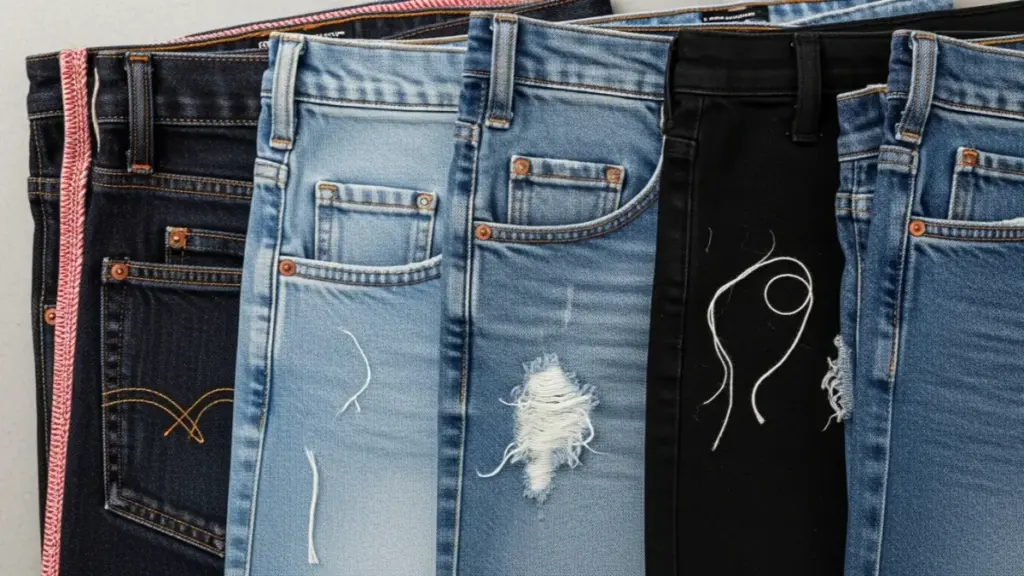
Selecting the right denim goes beyond matching a swatch to a design concept. For product developers, textile buyers, and fabric technologists, choices directly affect cost control, production efficiency, and customer satisfaction. Evaluate fiber blends, construction methods, performance metrics, and supplier capabilities to ensure fabric properties align with the product’s market positioning.
Consider Fiber Composition
Match fiber content to product function. 100% cotton denim offers durability and breathability for traditional jeans and rugged apparel. Cotton-polyester blends enhance abrasion resistance and color retention but reduce breathability. Adding spandex or similar stretch fibers improves fit and movement for fashion-forward styles; confirm stretch recovery before committing to bulk production.
Understand Fabric Construction and Finishing
Construction dictates performance; finishing sets aesthetic. Raw denim develops a natural fade, sanforized versions minimize shrinkage, and selvedge signals premium heritage. Twill direction—right-hand, left-hand, or broken—impacts hand feel and abrasion resistance, which is vital for workwear. Finishes such as washed, stonewashed, or acid-washed support trend alignment but also change drape and tactile qualities, so weigh style against functional requirements.
Evaluate Performance Characteristics
Test durability for workwear or utility garments to withstand repeated stress. Prioritize breathability for warm climates and casual styles to reduce returns. Assess elasticity and recovery for stretch denim to prevent sagging. Secure strong color retention to uphold brand image and minimize replacements over the product lifecycle.
Match Denim to Intended End Use
Define end application before sourcing. Poids lourd, abrasion-resistant denim suits workwear and industrial uniforms. Fashion apparel may focus on lighter weights, extensible, and trend finishes without compromising wear life. Organic, ecru, or silk blends target sustainability or luxury markets. For upholstery or industrial use, verify tensile strength and finishing meet safety and durability standards.
Use Technical Datasheets, Testing, and Supplier Assessment
Request technical datasheets to confirm fiber content, poids du tissu, and finishes before purchase. On receiving samples, run real-use tests for colorfastness, dimensional stability, and hand feel. Assess supplier quality control records and sustainability certifications to reduce compliance risks and ensure reliable, long-term sourcing.
Custom Denim Solutions Tailored for Your Brand
Partner with Guangzhou Changhong Garment to access expert denim manufacturing with flexible order sizes, deep customization options, and a commitment to sustainable production. Elevate your denim collection with premium quality made possible by our vertically integrated factory and fabric mill.
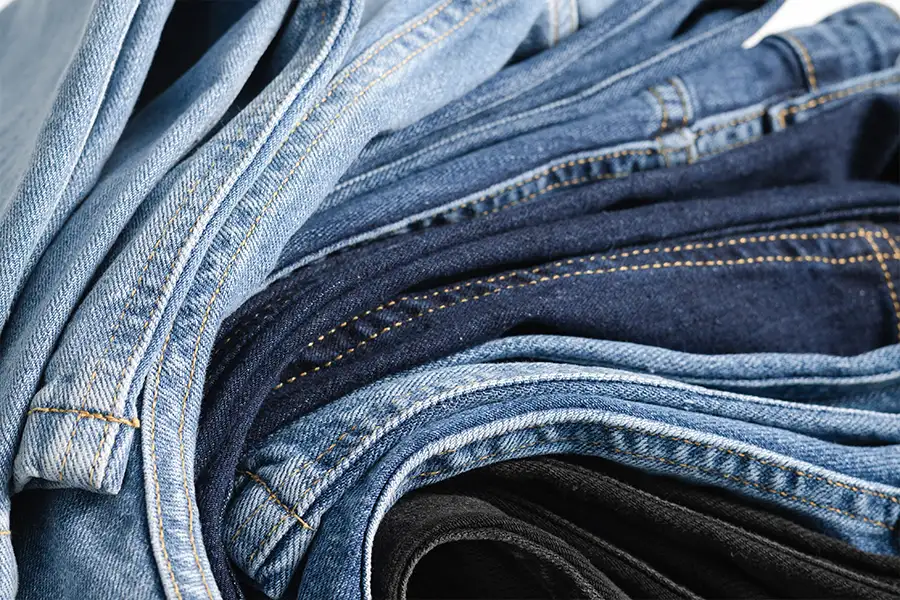
FAQ
What are the main types of denim?
The main types of denim include raw, sanforized, selvedge, extensible, bull, lavage acide, crushed, poly, colored, chambray, organique, and specialty denims.
What’s the difference between raw and washed denim?
Raw denim is untreated fabric that hasn’t been washed or pre-shrunk after dyeing, preserving its deep indigo tone and rigid feel. It fades naturally over time, creating a personalized worn look. En revanche, washed denim has undergone processes such as stone wash or enzyme wash to soften the fabric and achieve a pre-faded or vintage appearance.
Which denim is best for stretch jeans?
Stretch denim is the best choice for stretch jeans, typically made from cotton blended with 1–3% elastane or spandex. This composition provides flexibility, better shape recovery, and improved comfort compared to 100% jean en coton. Lightweight to mid-weight fabrics (8–12 onces) are ideal for slim or skinny fits.
How to identify selvedge denim?
Genuine selvedge is produced on shuttle looms, yielding tightly woven edges that resist fraying, marked by a narrow finished band and often a colored thread—typically red or white—visible when cuffs are rolled.
What are the main types of denim colors?
The main types include indigo blue, black, grey, blanc, and colored denims such as khaki, pastel, or tinted shades. These hues are achieved through indigo, sulfur, or reactive dyeing processes. Indigo remains the most traditional choice, while sulfur-dyed black and grey denims are popular for urban and contemporary looks. Colored denims are often used in seasonal collections to expand design variety and brand expression.

